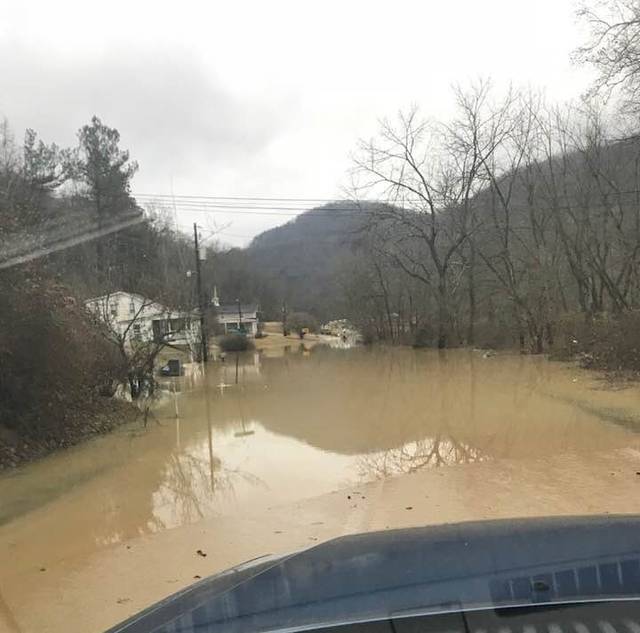Flood preparedness
Published 11:03 am Friday, February 16, 2018

Courtesy of Albey Brock
Flooding was widespread throughout Bell County and the Tri-State area last weekend.
The process of assessing all of the damage of the recent flooding of parts of Bell, Harlan and Claiborne counties is still underway. Unfortunately, more rain is adding more stress to the already weighty situation.
Bell and Harlan counties are under a flood watch on Saturday from 10 a.m. until 10 p.m.
The National Weather Service in Jackson said Friday evening that another round of moderate to heavy round of rainfall is expected across southeast Kentucky on Saturday.
“With the ground already very saturated from previous rainfall, the additional rainfall could lead to localized flooding of low lying areas. Rainfall amounts will range from 0.75 to around 1 inch,” the bulletin states. “There will be a threat of flooding along area creeks, streams, and in low lying areas. There may also be a chance for a few mudslides.”
Flooding is an all too real reality for the community — as there is a history of it. The best way to combat potential disaster and loss is to be as knowledgeable and on top of the situation as can be.
The biggest tenant of flood safety is the NOAA trademarked, “Turn Around, Don’t Drown!” mantra. According to the National Weather Service, the CDC states that over half of all drowning deaths during a flood are from people who drive their vehicles in the flood waters. Underestimating how much power flowing water has is the real danger. Only six inches of fast moving water is enough to knock a full grown adult off of their feet. Only 12 inches is enough to wash away a small car and two feet is enough to wash away almost any vehicle.
Preparing for a flood, especially a flash flood, may seem somewhat impossible — but there are things you can do to remain as safe as possible. Designating a communication plan with family and loved ones is key. Having a predetermined meeting place that everyone can go to cuts down on the stressful scrambling of trying to locate everyone and contact them.
Having some form of emergency kit is also key. Water services may stop for days if the flooding is bad enough or your areas water source may become corrupted with debris. Having enough clean water stored and ready at a moments notice eliminates the fear of not having clean water to drink. Having non-perishable food that doesn’t require refrigeration is also a must.
Doing a bit of legwork can also help you in case of a flood. Contact your local emergency management office to see whether your home, business or school is in a floodplain. They can also tell you what roadways are safe and which ones are not.
If your home is a position where it can be flooded, have prepared sandbags just in case. If your home’s plumbing system doesn’t have them already, you can have your plumber install check-valves to help prevent water from overflowing out of your pipes in the kitchen and bathrooms.
It is always optimal to be prepared to evacuate. If a flood warning is in effect, do not procrastinate in packing anything essential for your family and pets to be ready to go at a moment’s notice.
During a flood, use your common sense. Don’t drive into the water, follow evacuation instructions, find higher ground, do not go in your basement or other flooded areas of your home — electricity and water do not mix.
There are also rules to live by after a flood. Stay out of the flood waters. Chemicals and toxins may be in the water. Dangerous debris and unstable roadways may also lurk in the water. Stay informed on the measures your local government is taking to help the community. Heeding danger and caution signs is a must as is waiting for the go ahead from local officials deeming what is and isn’t safe.
Knowledge and common sense are the two biggest weapons a community has against not only floods, but other disasters as well.
Information for this article found at http://www.floodsafety.noaa.gov/index.shtml.





